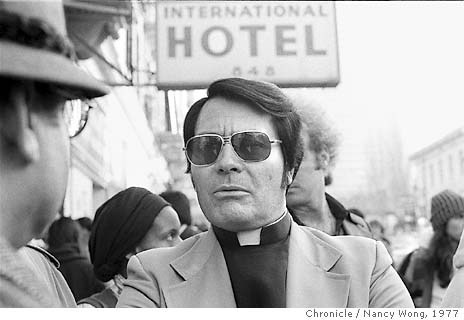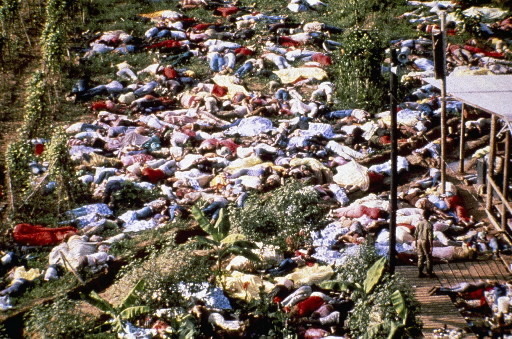What do you think?
Rate this book


In 1954, a pastor named Jim Jones opened a church in Indianapolis called People's Temple Full Gospel Church. He was a charismatic preacher with idealistic beliefs, and he quickly filled his pews with an audience eager to hear his sermons on social justice. After Jones moved his church to Northern California in 1965, he became a major player in Northern California politics; he provided vital support in electing friendly political candidates to office, and they in turn offered him a protective shield that kept stories of abuse and fraud out of the papers. Even as Jones’s behavior became erratic and his message more ominous, his followers found it increasingly difficult to pull away from the church. By the time Jones relocated the Peoples Temple a final time to a remote jungle in Guyana and the U.S. Government decided to investigate allegations of abuse and false imprisonment in Jonestown, it was too late.
A Thousand Lives follows the experiences of five People's Temple members who went to Jonestown: a middle-class English teacher from Colorado, an elderly African American woman raised in Jim Crow Alabama, a troubled young black man from Oakland, and a working-class father and his teenage son. These people joined the church for vastly different reasons. Some, such as eighteen-year-old Stanley Clayton, appreciated Jones’s message of racial equality and empowering the dispossessed. Others, like Hyacinth Thrash and her sister Zipporah, were dazzled by his claims of being a faith healer — Hyacinth believed Jones had healed a cancerous tumor in her breast. Edith Roller, a well-educated white progressive, joined Peoples Temple because she wanted to help the less fortunate. Tommy Bogue, a teen, hated Jones’s church, but was forced to attend services—and move to Jonestown — because his parents were members.
A Thousand Lives is the story of Jonestown as it has never been told before. New York Times bestselling author Julia Scheeres drew from thousands of recently declassified FBI documents and audiotapes, as well as rare videos and interviews, to piece together an unprecedented and compelling history of the doomed camp, focusing on the people who lived there. Her own experiences at an oppressive reform school in the Dominican Republic, detailed in her unforgettable debut memoir Jesus Land, gave her unusual insight into this story.
The people who built Jonestown wanted to forge a better life for themselves and their children. They sought to create a truly egalitarian society. In South America, however, they found themselves trapped in Jonestown and cut off from the outside world as their leader goaded them toward committing “revolutionary suicide” and deprived them of food, sleep, and hope. Yet even as Jones resorted to lies and psychological warfare, Jonestown residents fought for their community, struggling to maintain their gardens, their school, their families, and their grip on reality.
Vividly written and impossible to forget, A Thousand Lives is a story of blind loyalty and daring escapes, of corrupted ideals and senseless, haunting loss.
307 pages, Hardcover
First published October 11, 2011
Death is not a fearful thing, it's living that's treacherous.Jim Jones November 18, 1978


”’I love socialism, and I’m willing to die to bring it about, but if I did, I’d take a thousand with me.’”I’m here to tell you right now that if you read this book, you’ll never look at religious prophets the same way ever again. But at the same time, it’s a book that demands to be read, especially at a time like this.
”’This is the age of the antihero. I will go down in history, mark my words.’”918 people voluntarily committed suicide in Jonestown on November 18th, 1978, including Jones himself, with 304 of them children under the age of 10. Over the years, people have tried to come to terms with this and grasp the fact that this even really, truly happened. Despite this, there’s one question that keeps popping up over and over again; Why? How could one man convince this many people to end their lives, to pack their bags, to move to a country in the middle of nowhere in the deep jungle, just for a cause?
”’How very much I’ve loved you. How very much I’ve tried my best to give you the good life.’”Julia Scheeres masterfully and sensitively tries to answer these questions this book, and by God does she do an amazing job. She never tried to sensationalize these people’s actions; nor does she condemn them or wonder how on earth they could have acted so crazy in order to do something like that. With tender understanding and a sharp critical eye, Scheeres takes us through a twenty year odyssey and into the mind of a the man who would go down in history for all the wrong reasons.
”In the beginning, Temple members referred to the settlement as the promised land or freedom land. In the end, it would only be known as Jonestown, a place of misery and death.”Ironically, I don’t think Jim Jones was born mad. From what Scheeres writes, he was considered a little odd during his youth (partially due to the fact that he had an effed up childhood), but nothing to be overly concerned about. What I think did him in was a combination of wanting to be noticed, to be powerful, and the mind-altering, devastating effects of a combination of drugs which basically handed him a death sentence. And he took almost a thousand lives with him in the process.
”Over the years, Jones would continue to chip away at his followers’ faith until they had nothing left to believe in but Jim Jones.”Scheeres doesn’t try and sugarcoat things for the readers of this book. It’s all there. From how Jones drugged his own parishioners in San Francisco so that they would bend to his every will to how he completely and utterly brainwashed them into doing anything and everything he wanted to, instilling so much fear into them about everything around them that they didn’t know what was real and what was fiction, it’s all there for you to read. And let me tell you, it’s hard to read. I tried to read a memoir before this, and I couldn’t get into it because I felt so removed from both the topic and how it was narrated. But in this book, I felt like I was actually there, and even though Scheeres told this book from third person perspective, I could feel the claustrophobic fear, the sense of losing control, and the utter hopelessness of the people of Jonestown. I also liked that she put in anecdotes and stories from survivors who chose to share their story with the author, and the utter sadness and pain that still comes across their voice when they remember their time in Jonestown. What makes it even more sad is that some people, even though they don’t miss the Jonestown aspect of it, miss the sense of community that was there in the beginning, when they felt they could change the world one person at a time.
”’There were a lot of people in the church who believed in me and supported me. I don’t have that no more.’”If you have to read one book about the Jonestown massacre -- whether to satisfy your curiosity, whether it’s a research book for class, if you’re dipping your toes into the realm of nonfictionland, or if you simply want a look into the mind of one the most infamous cults in American history -- read this book. Julia Scheeres delicately but masterfully balances a fine line between being a reporter and being respectful to those who have survived. She brilliantly captures the mind of a man who could have been great, but for reasons only known to him did he decide to take the wrong path, and lead unwilling, innocent people to their almost certain deaths.
”The people who moved to Jonestown should be remembered as noble idealists. They wanted to create a better, more equitable, society. They wanted their kids to be free of violence and racism. They rejected sexist gender roles. They believed in a dream.We want peace, we want an end to the various racisms, macro, and micro-aggressions here in the United States. It almost feels like we’re living in a hybrid world of 1960s racist America and 1930s Nazi Germany. People are so frustrated, so tired, and so ANGRY that it wouldn’t surprise me in the least if a Jim Jones type of figure were to pop up and prey on people’s weaknesses. Now I know there are some of you rolling your eyes melodramatically and saying that I’m being completely ridiculous and something like this would never happen in a million years, cause we’re smarter than that. And to that I say this; I thought that during this election cycle we would be smarter than this.
How terribly they were betrayed.”
”It will not hurt. If you’d be... if you’ll be quiet. If you’ll be quiet.”